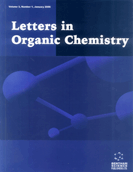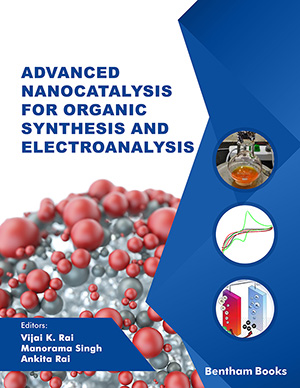Abstract
A new tetra triazole functionalized calix[4]resorcinarene macrocycle (5) is synthesized and utilized for the detection of copper ions in the aqueous medium. The photophysical potential of compound (5) is examined by a range of cations (Ba2+, Ca2+, Co2+, Hg2+, K+, Mg2+, Mn2+, Na+, NH4 + and Pd2+). The triazole based calix[4]resorcinarene macrocycle (5) has interacted with Cu2+ ion in preference of other cations. A significant quenching has been observed after the addition of 15 μM Cu2+ ion solution, which produced 4.2 folds drift in the absorption intensity of compound (5). Tetra triazole functionalized calix[4]resorcinarene macrocycle showed high selectivity towards copper ion chemosensing without any interference in competitive studies. The pH studies of compound (5) with Cu2+ indicated the maximum chelation between 7- 7.5 pH. The compound (5) is capable to recognize Cu2+ at 1 μM detectable limit. Copper ion was detected in tap water with 15 μM concentration. Job’s plot showed 1:2 binding ratio between macrocycle (5) and Cu2+.
Keywords: Calix[4]resorcinarene, chemosensor, click reaction, copper ion, triazole, water analysis.
[http://dx.doi.org/10.1021/cr100383r] [PMID: 21395328]
[http://dx.doi.org/10.1016/j.mseb.2016.04.001]
[http://dx.doi.org/10.1016/j.biortech.2008.01.036] [PMID: 18334292]
[http://dx.doi.org/10.1039/C4CS00138A] [PMID: 25099276]
[http://dx.doi.org/10.1016/S0361-9230(01)00454-3] [PMID: 11470313]
[http://dx.doi.org/10.1021/cr040410w] [PMID: 16771441]
[http://dx.doi.org/10.1016/j.jenvman.2010.11.011] [PMID: 21138785]
[http://dx.doi.org/10.1016/j.jhazmat.2013.07.071] [PMID: 23972667]
[http://dx.doi.org/10.1021/es60074a009]
[http://dx.doi.org/10.1111/j.1469-185X.1981.tb00345.x]
[http://dx.doi.org/10.1016/j.bios.2016.11.069] [PMID: 27923190]
[http://dx.doi.org/10.1016/j.fct.2009.12.029] [PMID: 20060028]
[http://dx.doi.org/10.1016/j.fct.2010.03.008] [PMID: 20226223]
[http://dx.doi.org/10.1016/j.saa.2012.08.027] [PMID: 22983201]
[http://dx.doi.org/10.1134/S106193481210005X]
[http://dx.doi.org/10.1021/ac3012126] [PMID: 22686413]
[http://dx.doi.org/10.1016/j.snb.2013.09.009]
[http://dx.doi.org/10.1039/c2an35130g] [PMID: 22531278]
[http://dx.doi.org/10.1039/C5DT00772K] [PMID: 25900000]
[http://dx.doi.org/10.1039/C7TB01596H]
[http://dx.doi.org/10.1016/j.snb.2015.09.119]
[http://dx.doi.org/10.1366/14-07815] [PMID: 26037773]
[PMID: 25822695]
[http://dx.doi.org/10.1016/j.snb.2015.09.065]
[http://dx.doi.org/10.1016/j.ceramint.2015.03.094]
[http://dx.doi.org/10.1016/j.snb.2017.04.120]
[http://dx.doi.org/10.1016/j.ecoenv.2016.03.017] [PMID: 27003618]
[http://dx.doi.org/10.1039/c1ob05676j] [PMID: 21837347]


























